In December 2024, the United States Studies Centre partnered with the Asan Institute for Policy Studies to co-host a workshop in Seoul, South Korea, on the topic of “Allied Extended Deterrence.” The workshop brought together leading experts from Australia, South Korea, Japan, and the United States to explore US allies’ role in extended deterrence in the Indo-Pacific. The discussions included how the four countries could operationalise conventional deterrence strategies; minilateralise collective deterrence partnerships; respond to the changing nuclear strategic balance and empower allies. The following report summarises the key insights and recommendations by the workshop’s expert participants in envisioning potential future roles for the United States, Australia, South Korea, and Japan to develop a collective allied approach to extended deterrence in the Indo-Pacific.
Executive summary
The re-election of Donald Trump has raised concerns over the US commitment to support allies and partners around the globe, including in the Indo-Pacific.1 Since the end of the Cold War, US extended deterrence assurances have primarily revolved around high-level consultations and dialogues, forward positioning of nuclear-capable aircraft, and visible displays of strategic assets such as ballistic missile submarine port visits and strategic bomber missions. While these measures have become more sophisticated in recent years, many US allies and partners in the Indo-Pacific have expressed concern that they are not sufficiently keeping pace with the region’s rapidly evolving security landscape.
As a result, Canberra, Seoul and Tokyo are actively working to modernise and strengthen their respective alliances with Washington to bolster deterrence. This shift is evident in the remarkable alignment of the four countries’ recent defence and strategic planning documents, which separately underline the need for greater internal and external balancing measures to address shared threats. Key priorities include substantial increases in defence spending, adjustments to force posture and structure, capability development, a deepening in their respective alliances, and expanding strategic and defence ties with other like-minded partners.
However, discussions on strengthening extended deterrence between the United States and its regional allies have largely remained confined within bilateral frameworks, overlooking the broader influence of intraregional security dynamics and the perspectives of other key regional partners. This fragmented approach underscores the need for a more inclusive and integrated approach to collective deterrence among key US allies.
Discussions on strengthening extended deterrence between the United States and its regional allies have largely remained confined within bilateral frameworks.
To help bridge this gap and build on the recent momentum generated by other minilateral dialogues and forums, the United States Studies Centre (USSC) and the Asan Institute for Policy Studies co-hosted a track 2 workshop in December 2024 in Seoul, South Korea, on “Allied Extended Deterrence.”2 The workshop brought together over a dozen leading experts from Australia, South Korea, Japan and the United States to identify challenges and opportunities for the four countries to bolster extended deterrence, identify areas of opportunity for the three US allies to leverage their growing defence capabilities and enhance their contribution to extended deterrence, and develop a more integrated and collective approach to addressing shared regional security challenges.
The following recommendations provide a roadmap for the United States and its Indo-Pacific allies to consider as they work to bolster the strength and credibility of extended deterrence, whose collective deterrence capabilities exceeds the sum of its parts.
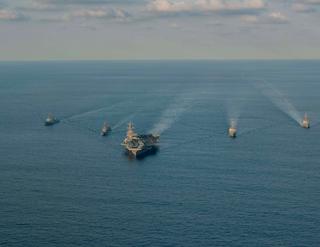
Recommendations
1. Clarity over US Indo-Pacific strategy
- The Trump administration should provide greater clarity on the US role, interests and approach to the Indo-Pacific, including its expectations of allies, nuclear modernisation and force posture plans.
2. Operationalising conventional deterrence strategies
- The United States and its allies and partners need to better tailor their deterrence strategies, individually and collectively, to specific threats and actors, cognisant of how their respective relationships with adversaries shape individual approaches to deterrence and prospective quadrilateral extended deterrence cooperation.
- The United States, Australia, South Korea, and Japan are more likely to advance quadrilateral cooperation by first pursuing a modest approach that prioritises the expansion and strengthening of logistical and defence industrial collaboration as a practical foundation for more ambitious efforts to bolster extended deterrence.
- Recognising sensitivities around information sharing, the four countries could streamline logistical and supply chain cooperation to support deeper defence industrial collaboration. There is an opportunity to leverage their respective alliances and defence industrial partnerships with the United States to share best practices for advancing broader defence industrial cooperation among Australia, South Korea, Japan and the United States.
3. Minilateralising collective deterrence
- The United States, Australia, South Korea, and Japan should adopt a ‘crawl-walk-run’ approach while bringing together their varying strategic and defence groupings or efforts, focused on developing low-risk initiatives that build foundations for more advanced future security collaboration in collective extended deterrence.
- The United States and its regional allies should consider how they can leverage the potential for horizontal escalation before or during a contingency to their own advantage, preventing or restricting the scope of an adversary’s strategic and defence choices.
- Broadening participation in subregional security groupings to include other key US allies and partners could ease the burden on the United States to sustain their momentum and open new avenues for overcoming existing obstacles. For instance, including Australia in the US-ROK-Japan trilateral security partnership could help buffer the impact of leadership changes in Washington, Seoul, and Tokyo, while also reducing the influence of political tensions between the United States’ two Northeast Asian allies by providing a fresh basis for cooperation and strengthening deterrence credibility.
4. Extended nuclear deterrence and empowering allies
- The United States could take a more proactive role in working with Indo-Pacific allies to plan for potential contingencies in the event of deterrence failure, ensuring that allied operational roles are clearly defined, expectations are aligned, and existing capability gaps are identified in advance.
- Demonstrating allies’ latent capacity to host US tactical nuclear weapons could, in itself, serve as a powerful means of reinforcing extended deterrence short of the full redeployment of US tactical nuclear weapons on a US ally’s territory.
- If the United States and an Indo-Pacific ally determine that deeper conventional nuclear integration is necessary, the four countries should consider looking to NATO’s SNOWCAT arrangement in Europe as a useful model from which to draw lessons.
- To maintain both public and allied support, the United States will need to carefully balance efforts to strengthen allies’ contributions to extended deterrence—including potential nuclear-related roles—while reaffirming its strong commitment to international legal and normative frameworks governing nuclear weapons. Should the strategic environment convince policymakers in Washington and an allied capital of the necessity of a redeployment in tactical nuclear weapon or advancing the ally’s latency to acquire a nuclear deterrent capability, the US ally should be accompanied by a roadmap for their disarmament that is responsive to the circumstances of the strategic environment.
Introduction
There are increasing concerns about the credibility of the US commitment to use military force, including nuclear weapons, to defend its key treaty allies in the Indo-Pacific. The hub-and-spokes alliance system built around US security assurances to Australia, South Korea, and Japan fundamentally differs from those in Europe.3 The North Atlantic Treaty Organization (NATO) explicitly enshrines a collective defence clause, the United Kingdom and France possess independent nuclear arsenals, and US tactical nuclear weapons continue to be forward deployed in Belgium, Germany, Italy, the Netherlands and Turkey.4 By contrast, the US extended nuclear deterrence commitment in the Indo-Pacific since the end of the Cold War has relied upon high-level consultations and dialogues, forward positioning of nuclear-capable aircraft, and visible displays of strategic assets such as ballistic missile submarine port visits and strategic bomber missions.5 This difference manifests itself in differing perceptions and levels of confidence among US allies over the credibility of US extended deterrence in the face of escalating threats.6
The United States has primarily engaged in bilateral discussions with its Indo-Pacific allies on the topic of conventional and extended nuclear deterrence cooperation. In the case of Australia, South Korea, and Japan, these efforts have been complemented by a growth in track 1.5 and track 2 bilateral engagements, wherein Australian, Korean and Japanese policymakers and experts have explored ways to accelerate and scale up the modernisation of their countries’ respective alliances to strengthen the US forward military presence and extended deterrence posture. Notable initiatives include the RAND Corporation and Asan Institute for Policy Studies 2021 report Countering the Risks of North Korean Nuclear Weapons,7 the United States Studies Centre’s 2023 ‘US-Australia Indo-Pacific Deterrence Dialogue,’8 and the Center for Strategic and International Studies and Korea Foundation’s 2024 ‘ROK-U.S. Strategic Forum.’9
While these engagements are valuable, their bilateral format can often limit the inclusion of perspectives from other significant US partners, overlooking the broader intraregional and interregional security dynamics shaping the Indo-Pacific’s emerging security order. There have been some efforts to bring together these allied perspectives, including the Sasakawa Peace Foundation’s ‘Next Alliance Initiative Conference,’10 extended deterrence workshops hosted by the Center for Global Security Research at the Lawrence Livermore National Laboratory in California,11 the USSC’s ongoing Australia-US-Japan trilateral simulations and ‘Bridging Allies’ workshop in collaboration with CSIS and the Centre for Security, Diplomacy and Strategy in 2023.12 However, despite a growing recognition of the need for a more integrated approach to discussions on extended deterrence that incorporates a variety of US allies’ perspectives, such efforts remain in their early stages, taking shape against the backdrop of an increasingly complex strategic environment.
To address this gap in track 2 discussions and facilitate an open discussion on the challenges and opportunities to collective deterrence, the United States Studies Centre and the Asan Institute for Policy Studies co-hosted a workshop on the topic of “allied extended deterrence” in Seoul, South Korea, in December 2024. The event brought together over a dozen leading experts from Australia, South Korea, Japan, and the United States to explore how these four countries could develop a more effective and integrated framework for extended deterrence in the Indo-Pacific. Participants examined the limitations of current approaches to extended deterrence and discussed pathways toward a more collective strategy—one that better leverages each country’s deterrence capabilities, aligns with the region’s growing latticework of minilateral security arrangements, and adapts to an evolving nuclear order. The workshop also considered how empowering trusted US partners with asymmetrical capabilities, including calls among some allies for developing nuclear latent capabilities, could impact their confidence in US extended deterrence commitments and enhance its overall strength. This report presents an anonymised summary of the workshop’s key insights and recommendations for the four countries in strengthening extended deterrence in the Indo-Pacific.
1. Operationalising conventional deterrence strategies
1.1 State of play
A deteriorating global and regional strategic landscape has prompted Australia, South Korea, Japan and the United States to reevaluate assumptions regarding their respective conventional deterrence strategies. As a result, there has been a remarkable alignment in the four countries’ recent defence and strategic planning documents. This includes growing overlap in the 2022 US National Defense Strategy, Australia’s 2023 Defence Strategic Review and 2024 National Defence Strategy, and Japan’s 2022 National Security Strategy and National Defense Strategy over the need for greater internal and external balancing measures to address shared threats. To bolster deterrence, these documents include a focus on delivering significant increases to defence funding, force posture and structure, capability development, the deepening of their respective alliances with the United States, and efforts to establish more creative partnerships with like-minded countries.13 Even South Korea, traditionally focused on the persistent North Korean threat, has released strategic policy documents such as its 2022 Strategy for a Free, Peaceful, and Prosperous Indo-Pacific Region, 2022 Defence White Paper and 2023 National Security Strategy, that attempt to grow Seoul’s security role beyond the confines of the Korean Peninsula and expand cooperative opportunities with the United States and other partners to enhance deterrence.14
US partners have also demonstrated a shared commitment to resource those strategies, including increasing defence budgets and procuring advanced capabilities. Canberra’s defence strategy is backed by a generational investment in defence modernisation, which will see the Australian defence budget grow to more than US$65 billion (AU$100 billion) by 2033–34, compared to US$36 billion in 2024.15 This budget increase will support the delivery of advanced, long-term defence industrial initiatives such as conventionally-armed, nuclear-powered submarines through the AUKUS partnership, and Australia’s sovereign production of munitions and missile stockpiles through its Guided Weapons and Explosive Ordinance (GWEO) Enterprise. South Korea released its ambitious acquisition implementation plan in March 2024, which included its detailed plan to invest US$1.8 billion (KRW2.4 trillion) in defence R&D, with a quarter going towards key defence technologies in ten fields with regional and global applications, including AI, quantum, space, uninhabited systems and advanced materials.16 For Seoul, these investments are part of a wider effort to position South Korea as one of the world’s top-four weapons suppliers by 2027.17 In 2022, Japan pledged to almost double its defence spending to 2% of GDP over the next five years – the largest spending increase of any US ally in Asia and one that, given the size of the Japanese economy, would rank Tokyo as the third largest defence spender globally.18 As made possible within the parameters set by its constitution, Japan’s 2022 Defense Buildup Program pledged to bolster internal deterrence and defence measures by investing in, among other areas, counterstrike capabilities, integrated air missile defence and unmanned assets.19 Australia, South Korea, Japan and the United States, therefore, are enhancing their respective deterrence postures on increasingly robust foundations.
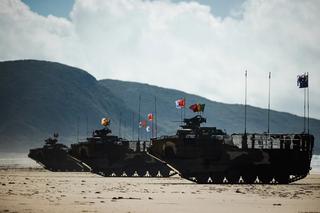
1.2 Challenges
Despite these significant investments in defence capabilities and procurement outlined above, dialogue participants emphasised that these efforts to bolster deterrence should be more precisely tailored to specific threats and actors rather than seeking a ‘one-size-fits all’ approach to deterrence that covers all contingencies broadly. Greater clarity between the four countries over how they currently conceive of approaching deterrence to specific actors would also help define the extent of divergence between Australia, South Korea, Japan and the United States, thereby helping inform the possible trajectory and availability of policy options for the United States and its regional partners to deliver critical mass to a more collective extended deterrence posture.
There was also no consensus regarding whether Australia, Japan, South Korea and the United States must share identical threat perceptions while pursuing deterrence strategies, both respectively and collectively. It was well appreciated that each country’s deterrence approach is shaped by distinct geopolitical circumstances and differing threat assessments. Their expectations of US security commitments also vary, particularly in their evaluations of the strategic challenge posed by China and how to appropriately respond. For example, while Australia’s strategic documents have increasingly highlighted concerns over China’s growing military assertiveness in the region, Australian participants also noted that the Albanese government’s concurrent efforts to stabilise political and economic ties with Beijing suggest that changes in these strategic documents’ language are more rhetorical than substantially policy-driven.20 Similarly, Japanese and South Korean participants pointed out that deep economic ties with China continue to constrain the range of strategic options for Tokyo and Seoul to pursue. As a result, clear roles for US allies and partners within a more integrated deterrence framework remain elusive given the current diversity of threat perceptions and competing interests.
Beyond clarifying areas of commonality and difference among US allies’ deterrence strategies, ensuring adversaries recognise the credibility of these deterrence initiatives is paramount. As a point of comparison, one dialogue participant highlighted that the failure to deter Russia’s invasion of Ukraine in February 2022 exposed flawed assumptions among many European states and, to some extent, the United States, about Russia’s core strategic interests. This included a widespread belief that Moscow’s economic and energy interdependence with Western Europe and supposed interest in upholding international norms would be sufficient in preventing the outbreak of a full-scale conflict.21 However, participants noted that these assumptions amounted to little more than ‘mirroring’: the projection of a state’s own priorities and strategic calculus onto the entity it is attempting to deter. This oversight ignored Moscow’s history of military activities and incursions in places such as Georgia, the Balkans and the Caucasus.22 An American participant recognised that it will be critical for Washington to leverage the insights of its East Asian partners, whose geographic proximity and historic interaction with challenges like China and North Korea can provide US policymakers with important lessons to glean from in order to prevent repeating similar mistakes in the Indo-Pacific.
Participants also agreed that strengthening deterrence must go hand in hand with implementing risk-reduction mechanisms to prevent unintended escalation. Drawing on Cold War strategist Thomas Schelling’s insights, deterrence was identified as most effective when conditions for conflict are not entirely under the control of the deterring party.23 However, Schelling also emphasised the importance of safeguards to prevent contingencies from unintentionally escalating into conflict. Dialogue participants cited the need for critical risk-reduction mechanisms, including direct communication channels like military hotlines, to prevent crises from spiralling out of control. However, dialogue participants expressed concern that today’s fast-evolving security landscape leaves little room for the kind of long-term risk mitigation strategies that emerged between the United States and the Soviet Union over decades of Cold War tensions following the 1962 Cuban Missile Crisis.
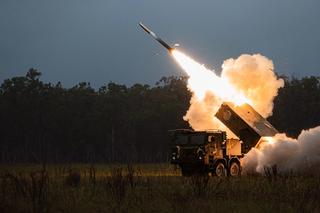
Participants underscored that this challenge is compounded by adversaries interpreting and operating the aforementioned risk reduction measures differently to that of the United States and its Indo-Pacific allies. China, for instance, has demonstrated a pattern of using risk reduction selectively and opportunistically to further its strategic interests rather than as a consistent means for ensuring mutual stability.24 Beijing has often cut off communication channels as a form of diplomatic leverage, such as when it severed communications with Washington following the Speaker of the United States House of Representatives Nancy Pelosi’s visit to Taiwan in August 2022.25 That same year, it also refused to utilise the cross-Taiwan Strait hotline established in 2015.26 Beijing has adjusted its coercive tactics to remain below thresholds that might trigger stronger international responses, only using risk-reduction agreements when they align with strategic interests rather than a genuine means of ensuring stability. China has utilised risk-reduction mechanisms when tensions with other have countries have exceeded its comfort level. This includes instances such as reaching an agreement with India to manage border patrols in the disputed Himalayan border27 and its recent decision to hold theatre-level commander talks with the United States in 2024.28 In March 2025, it was also reported that Beijing and Washington are in the process of organising a potential June summit between President Xi and President Trump.29 For the United States and its Indo-Pacific allies, this presents a critical dilemma: how to strengthen deterrence by raising the costs of adversaries’ aggressive behaviour while maintaining safeguards against escalation when adversaries ultimately treat such safeguards as a form of strategic leverage. Striking this balance presents a significant challenge for the four countries in delivering credible and effective deterrence postures in the region respectively.
1.3 Opportunities and recommendations
The United States, Australia, South Korea and Japan need to better tailor their deterrence strategies to specific threats and actors, fully aware of how their respective relationships with adversaries shapes individual, bilateral and potential future quadrilateral approaches to deterrence cooperation. While the four countries hold differing threat perceptions and levels of economic dependence with adversaries, participants agreed that these differences do not prevent them from enhancing conventional deterrence, respectively and collectively. Importantly, economic ties themselves vary in nature and degree. Australian participants, for instance, highlighted that despite Australia’s close economic relationship with China, the strategic risks are partially offset by the nature of their trade. Australia’s primary exports to China such as iron ore and natural gas are commodities China heavily relies upon, making sustained economic coercion like sanctions less enduring. As a result, Australia’s economic ties do not undermine its deterrence capability or preclude its participation in broader allied deterrence efforts.
The United States, Australia, South Korea, and Japan are more likely to advance quadrilateral cooperation on conventional deterrence by initially pursuing a modest approach that prioritises the expansion and strengthening of logistical and defence industrial collaboration. These efforts would lay important practical foundations for more ambitious efforts to bolster collective extended deterrence. Varying threat perceptions and capabilities among the four countries means they should not be too hasty in jumping to high-cost, large-scale cooperative initiatives. While participants noted the merits of collaborating on more sophisticated cooperative efforts like the F-35 stealth fighter jet, they identified cooperation on enhancing logistical coordination and co-production of munitions in the defence industrial sphere as a more practical and immediate route, echoing the mantra of former US Deputy Secretary of Defense Kathleen Hicks that “production is deterrence.”30 This debate among dialogue participants reflects an emerging shift away from a ‘capabilities-based’ deterrence approach, focused on specific platforms, to an ‘availability-based’ deterrence that is centred on supply and readiness. Dialogue participants noted the important examples to model, including the US-Japan Defense Industrial Cooperation, Acquisition, and Sustainment (DICAS) framework, and Australia’s Guided Weapons and Explosive Ordnance (GWEO) Enterprise.
To facilitate enhanced defence industrial collaboration, the four countries should consider streamlining logistical and supply chain cooperation, using their respective bilateral alliances with the United States as a foundation for sharing insights over best practices. Sensitivities around sharing a country’s defence supply chains and logistics networks have traditionally hampered transparency between the United States and close allies, preventing defence industrial cooperation from reaching its full potential. Recent strategic documents such as the 2024 US Commission on the National Defense Strategy, however, emphasises that the growing risk of simultaneous or successive multi-theatre conflicts necessitates the United States to advance defence industrial mechanisms that can overcome current barriers to collaboration with US allies, including differing classification systems, to enhance joint efforts on developing essential security innovations.31 While creating a fully integrated logistical systems is unrealistic in the near term given such sensitivities, dialogue participants recommended that the United States and its allies develop a single interface software to link the logistics management systems of comparable military branches (e.g., Navy, Air Force, Army, etc.) across the four countries. A Japanese participant noted that advancing US-Japan logistical cooperation remains challenging and that Japan could glean significant insights from other US partners like Australia who engage with Washington on defence industrial issues. Only after these practical mechanisms are in place can the four allies consider moving towards a more comprehensive, combined deterrence framework.
2. Minilateralising collective deterrence
2.1 State of play
In light of the shortcomings of multilateralism, minilateralism has emerged as an alternative format for ensuring security and deterrence in the Indo-Pacific. Under the Biden administration, the United States identified its allies and partners as the “most important strategic asset and indispensable element”32 in contributing to global and regional security, referencing “allies” 38 times and “partners” or “partnership” 167 times in its 2022 National Security Strategy.33
As a reflection of the importance attributed to US allies and partners in deterring adversaries, the Biden administration attempted to innovate new partnerships and upgrade existing bilateral alliances and minilateral groupings. These included, among others, the creation of the Australia-United Kingdom-United States (AUKUS) partnership, providing nuclear-powered, conventionally armed submarines for Australia and developing advanced military technologies; the new “SQUAD” grouping between Australia, Japan, the Philippines and the United States; the establishment of a trilateral security pact between South Korea, Japan and the United States; and advancing the Quadrilateral Security Dialogue (or “Quad”) between Australia, India, Japan and the United States.
By contrast, the second Trump administration continues to raise concerns amongst US allies and partners in the region. Trump’s “America First” international policy is shaped around the reordering of US global economic engagement through tariffs and demands for US allies and partners to spend more on their own security. As such, many NATO members are discussing moving from a 2% to 3% of GDP benchmark for defence spending, and senior Trump officials have signalled this indicator should apply to US partners in the Indo-Pacific as well, including an argument for up to 10% for Taiwan.34
Despite the unpredictable nature of the new US president, the new administration has made some key appointments, clarifying statements and policy decisions regarding the Indo-Pacific region that provide a degree of optimism for key US allies and partners. The selection of a high number of ‘China hawks’ for senior cabinet roles and positions in the second Trump administration’s National Security Council, Pentagon, Department of Defense and Department of State presages changes in US policies towards the region and a potential reshaping of the US bilateral alliances and minilateral partnerships.35
The appointment of Marco Rubio as Secretary of State and long-time Republican strategists such as Elbridge Colby to the position of Under Secretary of Defense for Policy, raised hopes that the Trump administration will prioritise the Indo-Pacific among its other global defence and foreign policy interests.36 For example, in February 2025, Secretary of State Rubio exempted Taiwan and the Philippines from the administration’s freeze of United States Agency for International Development (USAID) programs.37 In his written statement for a Senate confirmation hearing, Colby similarly emphasised the importance of working closely with regional allies and partners, stating that these relationships should continue to be updated to “reflect the broader geopolitical and military circumstances,” and described President Trump’s vision of foreign policy as one that “involves empowering capable and willing allies like South Korea.”38
There has also been substantial Cabinet-level engagement. The invitation of Quad foreign ministers to President Trump’s inauguration and their meeting the following day provided a strong first start. The joint statement is interesting for both its brevity and its commitment to “strengthening a Free and Open Indo-Pacific where the rule of law, democratic values, sovereignty, and territorial integrity are upheld and defended.”39 This was followed up by US Defense Secretary Pete Hegseth’s first international meeting with Australian Deputy Prime Minister and Minister for Defence, Richard Marles, to reaffirm the US commitment to the AUKUS pact,40 and a meeting between the foreign ministers of Japan, South Korea, and the United States in February 2025 in Munich.41
For US allies and partners in the Indo-Pacific, these developments are seen as positive steps to reaffirming the United States’ strategic and defence position in the region. The next stage in developing the region’s emerging latticework will be bringing these bilateral partnerships and minilateral groupings closer together, setting the foundations for more robust collective deterrence arrangements.
2.2 Challenges
Operational challenges and local sensitivities regarding the risks of horizontal escalation were highlighted as a major impediment to building a more integrated allied approach to extended deterrence. Japan’s constitutional constraints, such as Article Nine, continue to place significant limits on Tokyo’s ability to enhance its deterrence and warfighting capabilities. In Australia’s case, its geographic distance from Northeast Asian flashpoints and those within the region’s broader First Island Chain means that Canberra’s response would inevitably be slower than Japan or South Korea’s, potentially weakening the perceived strength of its deterrence contribution. South Korea’s experience in maritime operations beyond the immediate vicinity of the Korean Peninsula is also limited. South Korean participants noted that past South Korean administrations’ ambitions to play a larger role in regional security have often been dampened due to the ongoing security challenge posed by North Korea. They also noted that a substantial redeployment of South Korean military assets to address a contingency elsewhere could undermine South Korea’s deterrence posture and disrupt the military balance on the Korean Peninsula, either in reality or perception, creating an opportunity for Pyongyang or other adversaries to potentially exploit.
Political leadership and political will were also cited as an issue for the United States, whose response to a regional contingency, including in the Taiwan Strait, would in large part determine allies’ responses. Dialogue participants expressed concern over whether the current US deterrence posture is robust enough to deter a Chinese attack against Taiwan or subsequently respond should deterrence fail. Participants cited bipartisan division in Washington and the Trump administration’s still emerging regional and Taiwan strategies, despite the first Trump administration having left a largely positive impression on Taiwan.42 Nevertheless, dialogue participants noted that Trump harbours no affinity for the democratic island in the way President Biden had, and has previously criticised Taiwan’s success in becoming a semiconductor powerhouse at the expense of the United States.43
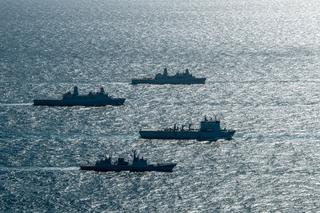
Given these uncertainties, there was a discussion over whether the United States should move away from its long-standing policy of “strategic ambiguity,” as pursued under the Biden administration, toward a clearer deterrence posture. While some dialogue participants argued that a firm public declaration of “strategic clarity” over US strategic and security commitments to Taiwan could strengthen deterrence, others favoured private diplomatic engagements to coordinate allied responses to preserve strategic flexibility and prevent China or other adversaries from working below the threshold of announced ‘red lines.’
Beyond the Taiwan Strait, dialogue participants raised concerns that Donald Trump’s return to office could reignite frictions with regional allies that could be detrimental to the strength of its extended deterrence posture. Disagreement between the United States and South Korea was cited as the most immediate example. It was well observed that Trump has frequently framed the US-ROK alliance as a relationship in which South Korea benefits disproportiona tely and should significantly increase its financial contributions for the presence of US troops.44 It should not go unnoticed, however, that South Korea reached an agreement with the United States in late 2024 to increase its contribution to US$1.13 billion to cover the cost of hosting US troop presence. The new agreement will come into effect in 2026 and will represent an 8.3% increase from 2025.45 Additionally, Elbridge Colby recently described South Korea’s defence spending and burden-sharing contributions as a “reliable model” that is “doing its part” than some other US allies.46
2.3 Opportunities and recommendations
The United States, Australia, South Korea, and Japan should adopt a ‘crawl-walk-run’ approach, focused on developing low-risk initiatives that build the foundations for more advanced future security collaboration. Current capability gaps among US allies means efforts towards a combined deterrence posture towards Taiwan or other potential flashpoints in the region’s First Island Chain and beyond remain a a work in progress. While the four countries should continue to reiterate shared concerns over security and stability around the Taiwan Strait and broader First Island Chain, dialogue participants suggested that more immediate and tangible collaborative avenues would maximise the impact of deterrence in the near term. These include:
- Joint humanitarian assistance and disaster relief operations to improve coordination and test regional response mechanisms.
- Countering disinformation campaigns directly targeting Taiwan.
- Strengthening Taiwan’s economic and diplomatic integration into the international system to increase the costs of Chinese aggression.
- Leveraging bilateral, minilateral and multilateral forums, such as the G7, to highlight the global security and economic risks of disrupting cross-Strait stability.
Should more favourable international and domestic conditions permit greater deterrence cooperation efforts, the four partners can then explore more robust forms of hard security support, including munitions support and rear-area assistance. This could include granting US forces access to ports and air bases for maintenance, servicing, and refuelling in a possible contingency. The logic is that while allies may seek to avoid horizontal escalation, Chinese warfighting plans may still choose to broaden the conflict regardless of US allies’ actions.
The United States, Australia, South Korea and Japan should consider how they can also leverage horizontal escalation to their advantage, stretching adversaries’ attention and strategic flexibility before or even during a contingency. While the US’ three allies, geographically closer to possible regional flashpoints, are understandably concerned about the risk of horizontal escalation by China and North Korea during a contingency, they should consider how horizontal escalation could provide opportunities for the four countries to complicate adversaries’ decision-making. For example, some South Korean participants suggested that, in the event that Pyongyang uses a Taiwan contingency as an opportunity to dramatically escalate tensions on the Korean Peninsula to levels Beijing is uncomfortable with, this could force Beijing to divert its diplomatic and military resources away from the Taiwan Strait and potentially cause fissures in the China-DPRK relationship as Beijing may seek to restrain Pyongyang’s emboldened behaviour. The region’s interlinked security dynamics, therefore, may prove to be a catalyst for advancing allied extended deterrence rather than degrading it.
Broadening participation in subregional security groupings to include other key US allies and partners could ease the burden on the United States to sustain their momentum and open new avenues for overcoming existing obstacles for some US-led minilateral groupings. Australia’s addition to the US-ROK-Japan trilateral security partnership was proposed as a potential means of overcoming concerns over changing domestic leadership cycles in Japan, South Korea and the United States and bolstering the trilateral security grouping’s deterrent value. Such a move would not only be important symbolically and signal unity among US partners, but could provide a new structural logic for the grouping, ensuring that historical or political tensions between Japan and South Korea do not derail security collaboration. Expanding groupings, like these, that include other relevant US partners may dilute the potency of enduring political or historical issues within minilateral groupings and ensure sustained security engagement.
3. Extended nuclear deterrence and empowering allies
3.1 State of play
The global and regional nuclear orders are in a state of flux as a number of adversaries increase their theatre and intercontinental nuclear strike capabilities. Historically, the United States has enjoyed nuclear superiority over Beijing. That is, Washington had the capability to strike mainland China with nuclear weapons whilst being able to defend against an equivalent Chinese attack via a combination of pre-emptive strikes on Chinese nuclear launch facilities and national missile defence. China’s efforts to develop its survivability and, indeed, overcome the United States’ nuclear superiority and achieve Mutually Assured Destruction (MAD) includes the construction of 300 missile silos and the deployment of concealed and mobile platforms, such as road-mobile transport erector launchers (TELs) and nuclear-armed submarines.47
Additionally, Beijing has enhanced the likelihood of its nuclear warheads successfully reaching their targets by developing nuclear-capable hypersonics, such as the DF-17 hypersonic boost-glide vehicle, and cruise missile capabilities able to evade the United States and its allies’ missile defence systems.48 The prospects for ensuring Chinese warheads successfully reach their targets are furthered by the rapid growth in its nuclear arsenal, which the US Department of Defense estimates is on track to reach over 1,000 warheads by 2030. The US Department of Defense concludes that the increase in quantity is designed to overwhelm US and allies’ national missile defence (NMD) systems.49 While Chinese leaders continue to publicly subscribe to a “no first use” policy — a commitment to not use nuclear weapons in a conflict first unless in retaliation to a nuclear attack — Chinese officials have privately stated that Beijing reserves the right to ‘first use’ of nuclear weapons if its nuclear forces were attacked with conventional weapons.50 Combined with its ongoing nuclear weapons capability buildup, such statements suggest that Beijing is shifting to a conventional nuclear warfighting concept, providing Chinese decisionmakers with new strategic options for wielding its nuclear assets. This has resulted in a growing nuclear shadow in the region that complicates and constrains potential US and allied military operations in the Indo-Pacific.
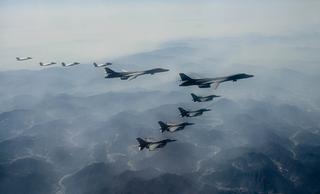
Like Russia, China has also extended diplomatic cover and economic support for North Korea, underlining Moscow and Beijing’s uneven compliance with the United Nations sanctions regime against Pyongyang. North Korea is developing a range of nuclear weapons options that are postured to attack regional US and allied military targets, including command and control facilities, missile defence systems and airfields.51 This includes testing of new, intermediate-range ballistic missile (IRBM) systems with manoeuvring re-entry and hypersonic glide vehicle payloads, and three successful tests of its Hwasong-18 road-mobile, solid fuel ICBM.52 North Korea is also enhancing its tactical nuclear weapons capability by developing a large number of short-range ballistic missiles (SRBM), which already includes the Scud and KN-23.53 Pyongyang’s ongoing development of its tactical nuclear capabilities is especially concerning for the United States and its regional partners as it offers North Korea the ability to operate along an ‘asymmetric escalation’ posture, deterring US-led conventional operations by threatening to respond with escalation through the use of tactical nuclear weapons. North Korea’s approach to nuclear deterrence was formalised in Pyongyang’s 2022 State Policy on the Nuclear Forces, which underscored that it would utilise its various and growing nuclear weapons capabilities even in a major conventional conflict on the Korean Peninsula.54
As the United States and its allies and partners confront more capable nuclear-armed adversaries, disincentivising adversaries from nuclear use to further regional goals is becoming increasingly critical. As a result, the United States has recently expanded efforts to strengthen extended deterrence in the Indo-Pacific by incorporating key allies into its existing regional nuclear force posture. In Australia, this includes rotational deployments of US Bomber Task Forces through Australian airfields and, from February 2025, the presence of US nuclear-powered attack submarines (SSNs) in Western Australia under the Submarine Rotational Force-West (SRF-West) arrangement.55 These developments enhance Australia’s growing latent capability to provide full spectrum support to US Bomber Task Forces and more effectively integrate into US Air Force Global Strike Command’s plans for deterrence and strategic attack operations.56
The United States has also elevated South Korea’s role in its nuclear strategy on the Korean Peninsula. To reassure South Korea of the United States’ enduring security commitment, the two countries signed the Washington Declaration in April 2023, which pledged to deter and respond to North Korea’s nuclear threats by strengthening deterrence and establishing the US-ROK Nuclear Consultative Group (NCG).57 The NCG has met regularly to discuss closer cooperation on extended deterrence through enhancing information sharing, consultation systems, joint planning, and delivery of nuclear-related operations.58 These commitments have also been accompanied by developments in the United States’ forward posture on the peninsula, including expanded training exercises with South Korean forces and new deployments of US strategic assets, such as carrier strike groups and nuclear-capable submarines.
While South Korea has welcomed these important developments, they have not entirely eliminated South Korea’s anxieties regarding the credibility of the US extended deterrence commitment – in many ways, they have grown. Polling by the Asan Institute found that even after the United States and South Korea announced the Washington Declaration in 2023, the South Korean public’s confidence in US extended nuclear deterrence declined from 2023. More recent polling finds that less than half of South Korean respondents express confidence that the United States would fulfill its commitment to use nuclear weapons if it meant risking its own security.59 As experts such as Ankit Panda and Tristan A. Volpe underscore, US efforts to bolster its nuclear deterrence efforts on the Korean Peninsula do not “fundamentally restructure [the United States’] security architecture with South Korea,” retaining ultimate US decision-making over the deployment, planning doctrine or use of US assets in the defence of South Korea.60 Public polling suggests these realities are not lost on the South Korean public as they assess the credibility of ongoing US extended deterrence commitments.
As a result of the deteriorating balance of regional power and questions over existing US extended deterrence commitments, there has also been a growing debate among experts in some allied capitals and in the United States regarding possible alternative pathways for US allies to contribute more to US extended nuclear deterrence posture. One of the pathways proposed includes the forward repositioning of US tactical nuclear weapons to Northeast Asia. In this scenario, while it is almost certain that Washington would retain ultimate authority over the use of these assets, the role of the allied host nation could vary — from passive hosting of US assets to joint planning and operations as in the case of US-led nuclear sharing with NATO (also known as ‘conventional nuclear integration’).61 This option has been supported by a growing number of South Korean, Japanese, and American politicians, including Senator Roger Wicker, Chairman of the US Senate Armed Services Committee.62
Another alternative pathway gaining traction within some expert circles and, in particular, among the South Korean public, is the prospect of US allies like South Korea developing their nuclear latency to establish an independent nuclear deterrent.63 In the Asan Institute polling in 2024, the prospects for the redeployment of US tactical nuclear weapons to the Korean Peninsula garnered support from 61% of the South Korean public, while South Korea’s potential pursuit of an independent nuclear capability received a record 71% approval rating.64 Both President Trump and the recently confirmed Under Secretary of Defense for Policy Elbridge Colby have indicated a willingness to tolerate a nuclear-armed South Korea, either for the purposes of freeing US defence resources for strategic competition with China or because South Korea’s acquisition of an independent nuclear weapons capability is, as Trump put it, “going to happen anyway.”65 The arrival of a second Trump administration may breathe new life into South Korea’s growing nuclear ambitions.
While current US policy does not explicitly support the forward redeployment of US tactical nuclear weapon to the Indo-Pacific, and discussions on leveraging US allies’ nuclear latency for an independent nuclear deterrent are most developed in South Korea, the decline in allied confidence in the US ability to provide a credible extended nuclear deterrent means that such options for empowering US allies’ nuclear capabilities should not be quickly dismissed. Dialogue participants examined the shifting nuclear order and explored the implications of empowering US allies’ roles in extended nuclear deterrence, and what the challenges and opportunities of the alternative pathways previously mentioned would entail.
3.2 Challenges
The majority of dialogue participants agreed that the rapidly evolving strategic environment, combined with Chinese and North Korean attempts to advance their strategic and tactical nuclear weapons capabilities, means US allies cannot rely on conventional forces alone to deter nuclear threats. Participants underscored how broader shifts in the strategic landscape are being compounded by stretched defence budgets, domestic fiscal pressures, and labour shortage issues arising from Japan, South Korea, and Australia’s aging populations. One participant highlighted that the combined defence budgets of South Korea, Australia, and Japan amount to approximately US$160 billion: about one-eighth of US defence spending and roughly one-fourth of China’s.66 Given these constraints, the desire among US allies to invest in asymmetric capabilities to offset demographic and budgetary constraints is indeed a pressing and urgent issue. Participants also pointed to the erosion or breakdown of arms control agreements and dialogues — including the suspension of the Intermediate-Range Nuclear Forces (INF) Treaty in 2019 or China’s rebuffing of consultations with the United States on nuclear arms controls — as a push factor for US allies to sophisticate their asymmetrical capabilities.67
Concerns over the credibility of US extended nuclear deterrence commitments to Japan, South Korea and Australia were not only confined to displays of political will. Dialogue participants noted that, even if the US commitment to nuclear retaliation is resolute, significant geographic inhibitors persist that could continue to undermine the perceived credibility of deterrence among US allies. In the case of the Korean Peninsula, for example, it was noted that it would take a US bomber aircraft carrying a B61-12 warhead 14 hours to reach the peninsula from the US mainland; four hours from Guam; and at least one hour from Japan. As a result of these geographic distances, some dialogue participants noted the advantages of US tactical nuclear weapons stationed closer to potential regional contingencies. This included the establishment of a use-it-or-lose-it dilemma for the United States, which could further deter adversaries from pursuing aggressive behaviour as it raises the prospects for tactical nuclear use. Their forward redeployment would also reduce their operational costs in a potential contingency should deterrence fail.
Other participants noted that a range of intermediary steps, short of a full redeployment of tactical nuclear weapons, exist which the United States and its allies could consider in response to a rapid deterioration in the strategic environment. One notable avenue that participants explored included US allies demonstrating their latent capability to host US tactical nuclear weapons. This could involve more routinely forward-deploying dual-capable aircraft, training personnel, and/or building the necessary infrastructure for nuclear weapons storage and delivery on allied territory. Participants noted that recent feasibility research by American experts into the redeployment of US tactical nuclear weapons to South Korea could be achieved in a five-to-seven-year time frame.68 Given these time horizons and the deterioration in the region’s security landscape, preparatory steps could begin now to ensure necessary infrastructure is in place should a geopolitical crisis or domestic political circumstances in the United States and an allied nation encourage the United States to redeploy nuclear weapons to the region. These measures could involve relatively low-cost initiatives, such as assembling storage facilities and extending airfield runways. Just as China’s construction of missile silos—occupied or not—creates strategic uncertainty for the United States and its allies, enhancing allied infrastructure to support US nuclear assets could similarly complicate adversaries’ decision-making and strengthen allied extended deterrence. Such moves would also send strong signals to adversaries while allowing the United States and allies to gauge reactions from other key stakeholder countries and organisations, such as ASEAN, to inform future policy decision-making on extended nuclear deterrence, including a potential redeployment of tactical nuclear weapons.
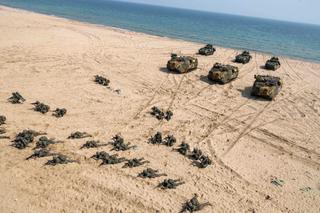
However, participants also noted that such efforts would likely remain on a country-by-country basis, rather than as an integrated, collective approach, due to varying levels of political and public support (i.e. ‘social license’) for advancing allies’ nuclear deterrent roles and capabilities. Participants noted that this was especially true in the case for a US ally intending to develop an independent nuclear deterrent capability. Australian and Japanese participants emphasised that, while Canberra and Tokyo are increasingly open to discussing areas that could further enhance conventional nuclear integration with the United States, this should not be mistaken for an interest in pursuing their own nuclear weapons.69 Public support for developing independent nuclear weapons capabilities is markedly weaker in Australia and Japan than in South Korea. In Australia’s case, participants highlighted several reasons for this disparity, including fears of entrapment in a US-China conflict; concerns about backlash from Southeast Asian and Pacific neighbours; and Australia’s longstanding commitment to nuclear non-proliferation.70 While AUKUS’s goal of equipping Australia with nuclear-powered submarines has started to invigorate discussions around the ‘nuclear’ domain in Australia, these have not extended into the realm of developing an Australian nuclear weapons capability. As such, Australian participants noted that Australia differs from South Korea, Japan, and NATO partners in terms of debating or envisioning the role of its own nuclear weapons capability (or lack thereof) within its broader deterrence efforts. As a result, advancements in bolstering allies’ direct role in US extended nuclear deterrence may progress at different rates across the region but would nevertheless have repercussions on each other.
Lastly, participants reiterated that any effort to enhance allies’ role in US extended nuclear deterrence, or indeed even develop an independent nuclear deterrent capability, would require robust bipartisan and public support given the political and fiscal demands that these efforts would entail. Some dialogue participants, however, noted the relative cost-effectiveness of a potential redeployment of US tactical nuclear weapons as one way to garner broad support from relevant political stakeholders and the broader public. A recent US research report concluded that the initial cost for redeploying US tactical nuclear weapons to the Korean Peninsula would cost between US$2.6 billion and US$3.7 billion, with recurring annual costs estimated to be between US$62 million and US$75 million—a fraction of the FY2025 US defence budget request.71 However, Australian participants cautioned that public support for sophisticated military initiatives at this scale should be couched in ‘national security’ and ‘sovereignty’ terms, rather than framed as financially viable, to get off the ground. Taking the example of the Australian public’s view towards Australia’s acquirement of nuclear-powered submarines at the cost of up to A$368 billion, Australian public support for AUKUS was found to be strongest when the pact is framed as a necessary measure for enhancing national security and deterrence.72 As such, participants noted these messaging strategies will be important for garnering public support for any of the aforementioned pathways for bolstering nuclear deterrence. Nevertheless, the issue of nuclearization in South Korea or Japan, while still remote, has the potential to drive a significant wedge in the two countries’ relationships with Washington and Canberra given that current US and Australian policy oppose the proliferation of independent nuclear capabilities in the region.
As such, for some participants, while the redeployment of US tactical nuclear weapons to the Indo-Pacific was seen as a preferable alternative to allies advancing their nuclear latency toward an independent nuclear deterrence capability, it remains crucial to ensure that such deployments—and any allied conventional nuclear integration initiatives—do not blur the distinction between conventional and nuclear forces in a way that might pressure adversaries to consider nuclear use in a crisis.
Therefore, while the United States and its allies should not dismiss growing discussions on the potential redeployment of US tactical nuclear weapons or calls from some partner capitals to advance their nuclear latency to the point of developing an independent nuclear deterrence capability, policymakers in the United States, Australia, South Korea, and Japan should continue exploring a broad range of options before deciding on either path. Participants noted that these options could include conducting regular joint training with allied conventional and US nuclear forces, developing infrastructure to host nuclear assets, enhancing joint planning and consultations on nuclear contingencies, hosting rotational deployments of US nuclear assets, earmarking US nuclear forces for potential use in Northeast Asian crises, and increasing US SSBN patrols in the region.
3.3 Opportunities and recommendations
The United States could consider being more proactive in its engagement with Indo-Pacific allies – particularly Australia, South Korea and Japan - over planning for potential contingencies should deterrence break down, ensuring allies’ operational roles are clearly articulated, expectations are managed and capability gaps are identified early on. Proposed steps to improve conventional nuclear integration within extended deterrence efforts includes maintaining the ROK-US Nuclear Consultative Group (NCG), and considering expanding the consultations with other US allies to support integrated deterrence. South Korean and Japanese participants suggested this could involve inviting South Korean experts to participate in US-Japan extended deterrence consultations and including Japanese experts in the ROK-US NCG. Another option could be to establish regular expert-level meetings with NATO’s Nuclear Planning Group High-Level Group (NPG HLG) to share best practices and foster cross-regional learning.
In particular, Australia was identified as lagging behind South Korea and Japan in the level of sophistication in its discussions with the United States over conventional nuclear integration. To this end, tangible steps for Australia to play a more proactive role in its alliance with the United States were proposed, including how Australia could consider establishing an extended deterrence dialogue with the United States, modelled on the initial US-Japan and US-ROK dialogues. This would involve a number of defence and foreign policy government agencies (e.g., DFAT and the Pentagon). Australian participants recommended that such arrangements could potentially evolve into a multilateral forum with other Indo-Pacific partners such as South Korea and Japan, ensuring such dialogues are inclusive of other key partners’ perspectives and roles. Additionally, in addressing escalation scenarios and mutual expectations, Australia and the United States should workshop scenarios to help clarify roles, responsibilities and joint responses during a regional crisis, including allies’ conventional roles in US nuclear operations, similar to NATO allies.
Demonstrating allies’ latent capability to host US tactical nuclear weapons could represent an effective form of bolstering extended deterrence. China’s construction of 300 missile silos in 2022 — regardless of whether they are occupied or empty — poses a risk to the United States and its allies.73 The United States and its regional partners could similarly consider this playbook and pursue efforts that enhance the visibility of their latent capability to host US tactical nuclear weapons. This could involve forward-deploying dual-capable aircraft, training personnel, and building the necessary infrastructure for nuclear weapons storage and delivery on US allies’ territory, with South Korea cited as the most likely first candidate. An American participant noted that the US Department of Defense’s standard processing for the construction of new military facilities typically spans five to seven years. Given these time horizons, preparatory steps should begin now to ensure the necessary infrastructure to potentially host US tactical nuclear weapons is ready if a geopolitical crisis or shifting domestic political circumstances encourage the United States to redeploy such assets to the region.74 These steps include modest steps such as building storage facilities and expanding airfield runway capabilities. Such moves would also send strong signals to adversaries on the consequences of aggressive behaviour, as well as allowing the United States and its allies to gauge reactions from influential regional stakeholders and populations that could help inform future policy decision-making on redeploying tactical nuclear weapons.
Features of NATO’s SNOWCAT arrangement in Europe offer a possible model for the United States, should it determine that enhancing conventional nuclear integration with Australia, South Korea, or Japan is necessary. While participants noted that the United States will almost certainly maintain full autonomy over its nuclear weapons capabilities, potential pathways for enhancing allies’ roles, including a potential redeployment of US tactical nuclear weapons to the Western Pacific, the United States and its allies could look to the Conventional Support to Nuclear Operations (CSNO) example set by NATO’s SNOWCAT (Support of Nuclear Operation with Conventional Air Tactics) arrangement.
This includes US partners providing air overwatch or air defence to US nuclear bombers. NATO’s annual Steadfast Noon exercise provides routine training to the United States and NATO allies for these operations.75 While the deployment of US B-52s — which have trained with South Korean F-35 and USFK F-16 fighter jets76 — and SSBNs to the Korean Peninsula are significant steps in enhancing conventional nuclear integration with South Korea, they have occurred irregularly and meant South Korea’s supporting conventional role in a regional contingency remains comparatively less developed than that with the United States’ European allies. The results of the third and fourth Nuclear Consultive Group between the United States and South Korea in June 2024 and January 2025 reaffirmed the importance of developing guideline principles and procedures in conventional nuclear integration.77 Nevertheless, as previously mentioned, in learning lessons from SNOWCAT for enhancing conventional nuclear integration, the United States and its allies should not overlook more immediate steps that could bolster extended deterrence in the near term. This also includes regular joint training with allied conventional and US nuclear forces, establishing infrastructure for hosting nuclear assets and enhancing joint planning and consultation on nuclear contingencies.
The United States will need to carefully balance efforts aimed at enhancing Australia, South Korea and Japan’s security contribution to extended deterrence — including potential nuclear-related roles — while upholding its strong commitment to international legal and normative frameworks governing nuclear weapons development. If the United States and an ally deem it necessary for a particular US ally to be more integrated in conventional nuclear deterrence initiatives (including joint planning and operations) or the strategic environment advances arguments for the emergence of a second centre of independent nuclear decision-making in the Indo-Pacific (i.e. an independent nuclear deterrent capability), then this should be accompanied by a clear pathway to their withdrawal or disarmament, respectively. Allies seeking to advance their nuclear capabilities, for example, should consider publicly presenting such advancements as primarily civilian in nature, particularly in areas such as fissile material production, and reaffirm their commitment to remaining a Non-Proliferation Treaty (NPT) member. In the case of South Korea — where these discussions are most advanced among the United States’ Indo-Pacific allies and partners — it should also tie any disarmament pathway to reciprocal steps by North Korea, ensuring that South Korea’s nuclear posture is framed as conditional and reversible. Even if the chances of successful disarmament remain low and does not sufficiently account for Chinese responses, publicly maintaining this disarmament objective would demonstrate ongoing alignment with global non-proliferation norms while shifting responsibility for South Korea’s nuclear future onto North Korea’s actions.
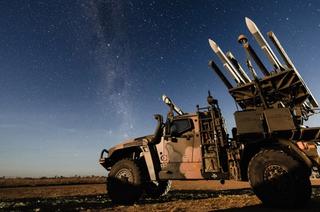




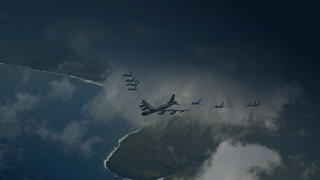





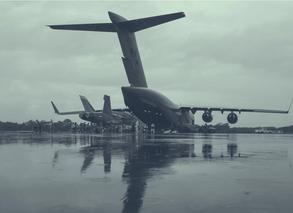
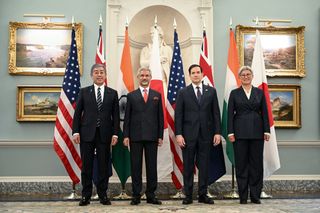
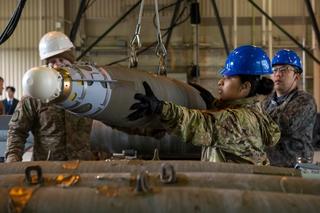
.jpg?rect=0,100,3600,2250&w=320&h=200&fit=min&auto=format)